Communicating in Gestures
By Cui Weiping, Professor, Beijing Fim Academy
In November 1996 a strange wedding ceremony took place at a labor reeducation camp in the north China city of Dalian. The groom, Liu Xiaobo, had arrived there shortly after being arrested two months earlier and now faced three years of labor reeducation. The bride, Liu Xia, a Beijing poet, had once had a good job, but had been investigated by the police for her friendship with Liao Yiwu and was now an independent writer. (Liao Yiwu had received a three-year sentence in 1990 for his long poem “Massacre” and his photographs commemorating June Fourth.)
It was Liu Xiaobo’s second encounter with the law. The first time he spent two and a half years in jail for his involvement in June Fourth. Each time he lost his freedom, Liu was caught by surprise; otherwise he probably would have made better arrangements in advance. As it was, the wedding ceremony was only a simple lunch, after which Liu Xia returned to Beijing, leaving Liu Xiaobo to undergo his labor reform. Liu Xia later explained why she insisted on a labor camp wedding by saying, “Once we were married, I had the legal right to visit him.”
Liu Xiaobo wrote in a poem,
We had no wedding certificate,
No legal guarantee,
God did not witness us.
We planted our tree in the sand,
Our wedding chamber in a cell,
Embracing and kissing
Under the jailers’ gaze.
(November 17, 1996)
At the end of this poem Liu alluded to the 19th-century English novel Wuthering Heights by Emily Brontë. That he did so revealed a secret: like Heathcliff and Catherine as described by this female writer, the new couple had the same fervent love for freedom, the same rough, true souls. This was the unique basis of their love.
During his three years of labor reeducation, Liu Xiaobo wrote many poems for his wife. They reached her only after passing through the labor camp’s censorship system. Under the circumstances he could not write about politics, so his emotions flowed like a torrent into his poetry. He used a variety of terms of endearment in addressing Liu Xia, and wrote many moving lines. For example, in a poem called “Your lifelong prisoner,” he wrote, “I’m your lifelong prisoner, my love; I want to live in your dark insides.”[1] In some ways Liu’s poems can be understood in the same way as the “Letters to Olga” of the former Czech dissident Havel. The process of writing a poem is a process of drawing near to oneself, a process of introspection.
Liu Xia, who had been writing poetry for a longer time, addressed fewer poems directly to Liu Xiaobo during this period. Her 1982 narrative poem, “The Story of the Sea,” had been openly published. The first time I saw Liu Xia, in 1986, she had just published a piece of experimental fiction that was much noticed by young writers of the time. In much the same way as in Eastern Europe at that time, during a political freeze young people expressed their yearning for a life of freedom by showing a passion for art and literary endeavor. Liu Xia was always surrounded by a group of vanguard literary figures and diverse artists. She had painted in oil since childhood, and was good at this too.
It was just when she embarked on her monthly marches to the Dalian labor camp that Liu Xia started to take photographs of dolls. The coincidence in timing can help us understand the photographs. Given Liu Xia’s private nature and her self-possession, she would not have been willing to let expressions of her yearning, empathy, and support for her husband fall into the hands of the camp’s censors. She needed to find some other way to express herself, as Liu Xiaobo had done. Better than expressing herself in words, she knew that photographs which at first glance appear bizarre, would confuse the ever-present “jailers’ gaze.”
She wanted to avoid not only that gaze, but the noisy, profane world, the human stage thronged with actors made up for various roles. If these two like-minded souls both hated fakery, between the two of them Liu Xiaobo was the one with a life of big ups and downs, tossed on the waves of the era, lifted up, then suddenly cast down to the depths; while Liu Xia was a person of an authenticity such as I have seldom encountered, who lived and felt with a rare, simple honesty. She was never comfortable with the glamorous aspect of Liu Xiaobo’s life and kept her distance from it. During the second year of her trips to the labor camp she wrote, “At a moment of defenseless fragility, an unrehearsed drama began. The spotlight betrayed … a role that should have been soft and sad.”
This is why the dolls — the raw material of her art — are all “ugly kids” instead of lovely dolls. This is the true self behind the stage curtain. Such “ugliness” can face oneself, can face the darkness within one’s heart, can hear the howls within, including those of collapse. A friend told me that one year when he went to Brazil he asked Liu Xiaobo whether he needed him to bring anything back, and Liu told him to bring some ugly dolls for Liu Xia to photograph. But when he brought them, Liu Xiaobo said they would not do, because “they are too pretty.”
The dolls in the photographs are pictured as physically unable to move, as entirely passive, and yet their spirits burst forth, expressing anger and resistance. In the photo on p. 14 of the catalogue four dolls are lined up wrapped in transparent plastic, trapped so they cannot breathe; yet they stick out their necks and stare angrily before them. On p. 40 a doll is tightly squeezed between two rocks against a wasteland-like background, but expresses his resistance not only through his glaring eyes but with the strip of white cloth covered with words wrapped around his head. Then there is the doll on p. 41, seized by a huge hand, and the one on p. 42, simply thrust into a birdcage, and the one on p. 43, squeezed between two stalks of bamboo so that it cannot get out.
Most often seen is a male doll. We can interpret this as Liu Xia’s way of getting closer to, empathizing with, and touching her imprisoned husband. But it can also be understood as expressing Liu Xia’s own situation and spiritual condition. How did Brontë’s Catherine put it? “I AM Heathcliff! He’s always, always in my mind: not as a pleasure, but as my own being.” Therefore, not only is Liu Xiaobo a challenger, Liu Xia herself is a challenger. Spiritually, they are indistinguishable and of equal importance. In the two photos on p. 21 and p. 44, the same doll – who is hanging halfway into the void in different postures, being tortured under the open sky, losing freedom on behalf of freedom – should be seen as a single being of both sexes. And in some photos male and female dolls appear together, such as on p. 45, where they are fenced in by the bars of a chair, the male doll’s chest bound, and the female doll seemingly drawn to the core of the earth. Perhaps we can see this as a portrayal of the artist and her husband.
Consider the first poem that Liu Xia ever wrote for Liu Xiaobo, on June 2, 1989, less than 48 hours before the shooting started, at a time when Liu Xiaobo was on hunger strike in Tiananmen Square. Liu Xia wrote, “I didn’t even get a word in with you. You have become a news personality. …I could only hide away from the crowd, have a smoke, and look at the sky.” In the photo on p. 46, the male and female dolls are separated by a pillar like the stone pillars in front of the gate at Tiananmen. One is shouting, the other is quietly watching, just like the two of them at the Square that year. The pain of June Fourth, 1989, shared by all our people, is an important bond between these two. In the three photos on pages 18, 19, and 47, the tightly covered, faceless ghosts should be seen as a profound memorial to the lost souls of June Fourth: so too the picture on p. 48 with its bed of candles. Still today, these lost souls and their families cannot speak, cannot appear in public; and people cannot publicly express grief for their deaths.
Books were a special passion for these two. “When I am alone/ I often see/you take my hand/ We walk within book after book/ Our hearts full of sadness” (Liu Xia, February 1997). We see some photographs that are related to books (pp. 27, 29, 49, and 50). The one in which a small person stands between two stacks of thick books [49] represents Liu Xiaobo’s former life. He was a fast reader. When Liu Xia migrated like a bird between Dalian and Beijing, she brought him tomes. As Liu Xiaobo told me, in labor reeducation you were not allowed to read political books, but you could read Thomas Mann, Dostoevsky, Kafka and so on, and that is why we have the picture on p. 28 of a trussed-up doll kneeling before an open book. Sometimes the photos contain a small joke. For example, the male doll on p. 50 standing on a kind of stilt points with his left hand to a group of books as if to say “It was them, this is how it all started.” What he points to are translations of American works by Thoreau, Emerson, and Poe. These were some of the sources of Liu Xiaobo’s thought.
Because of them, a gap had opened up between Liu Xiaobo and the Chinese tradition. Somewhat earlier his violent attacks on traditional Chinese culture had been widely criticized. Liu Xiaobo was similar in this way to Lu Xun (1881-1936), who is considered a representative figure of China’s new culture. This standard-bearer of 20th-century Chinese culture had written in one of his fictional works, “All over this [Chinese] history is written two words: ‘Eat people.'” This famous sentence exposes and indicts China’s dictatorial system and traditional political culture. In some photographs dolls are trapped behind pictographs, their tongues lolling out of their mouths but seeming unable to speak, as if they were corpses (pages 24, 51, and 52). On p. 53, the protagonist is squeezed between the two halves of a heavy metal door, suggesting a tense relationship with the traditional Chinese imperial system. The irony is that it is precisely those who are the severest critics of the culture of their own country who over the course of time come to be considered their culture’s representatives. By bringing in other sources, they enrich their own people’s traditions.
Liu Xiaobo must have seen some of these photographs while he was in labor camp. He referred to them in a poem written a few months before he finished his sentence (August 31, 1989). In this poem, entitled “Tell It to the Dolls – For Liu Xia Who Plays Every Day with Dolls,” he wrote, “When you tell it to the dolls/Avoid the truth/ Just use the names/ But leave out/The facts.” “All you have subverted with the dolls/ Are your own poems.” Clearly these photos of dolls, even as they express something, also in some way hide it. More accurately, they are a form of “smuggling.” Just as Liu Xiaobo’s poems cannot be published in China, so these photographs by Liu Xia also cannot be publicly exhibited there.
These photos of sufferers are also the piercing cry of free spirits. As Liu Xia herself wrote of them,
Living together with the dolls,
Surrounded by the power of silence,
The world open around us,
We communicate in gestures.
(“The Power of Silence,” November 1998)
[1] Translation of these lines by Susan Wilf, in Liu Xiaobo, No Enemies, No Hatred: Selected Essays and Poems, Perry Link et al., eds. (Cambridge, MA: Harvard University Press, 2012), p. 175.
•
Cui Weiping is is a Beijing Film Academy professor, a scholar of modern Eastern European political culture, a social and cultural critic, translator, and poet. Her controversial blog (in Chinese) is read throughout the world, and many thousands subscribe to her Twitter account (also in Chinese). She was born in Jiangsu province in 1956. Cui has been repeatedly banned from traveling abroad as a result of her fearless expression of her views. Her most recent publications (in Chinese) include Before the Justice (New Star, 2005) and Narrative of our Times (Flower City, 2008).
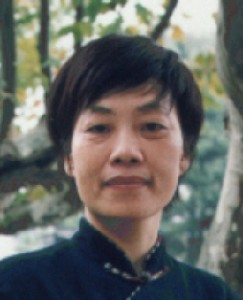
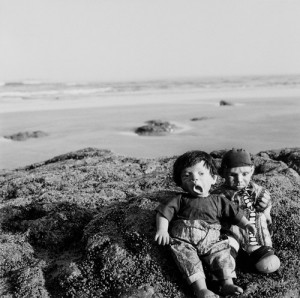
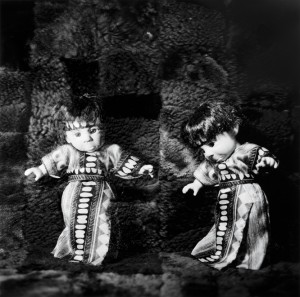
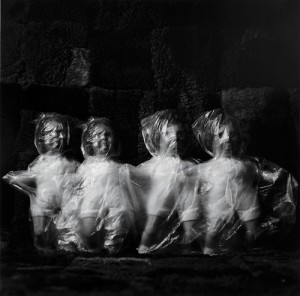
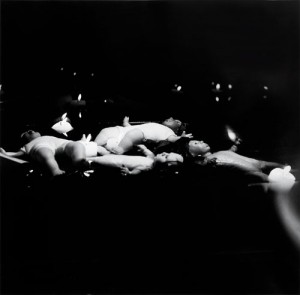
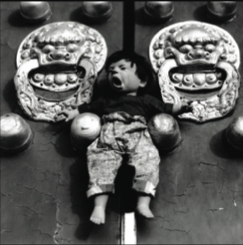
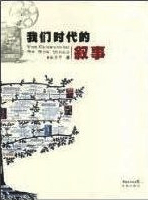
Leave a Reply